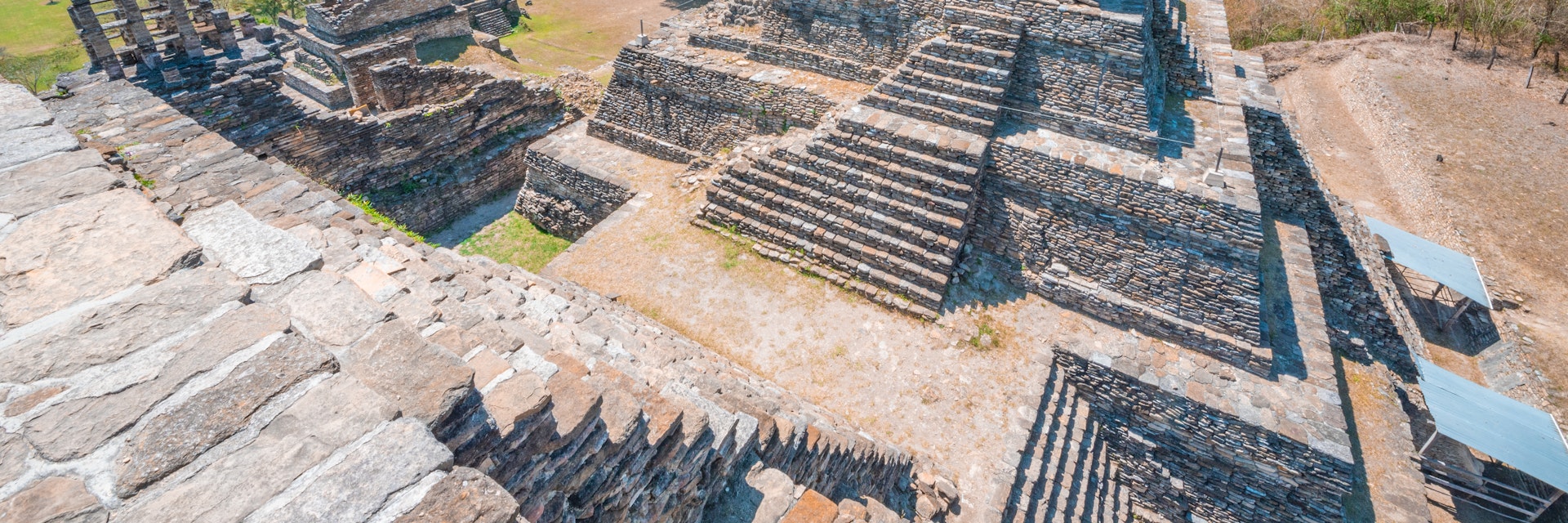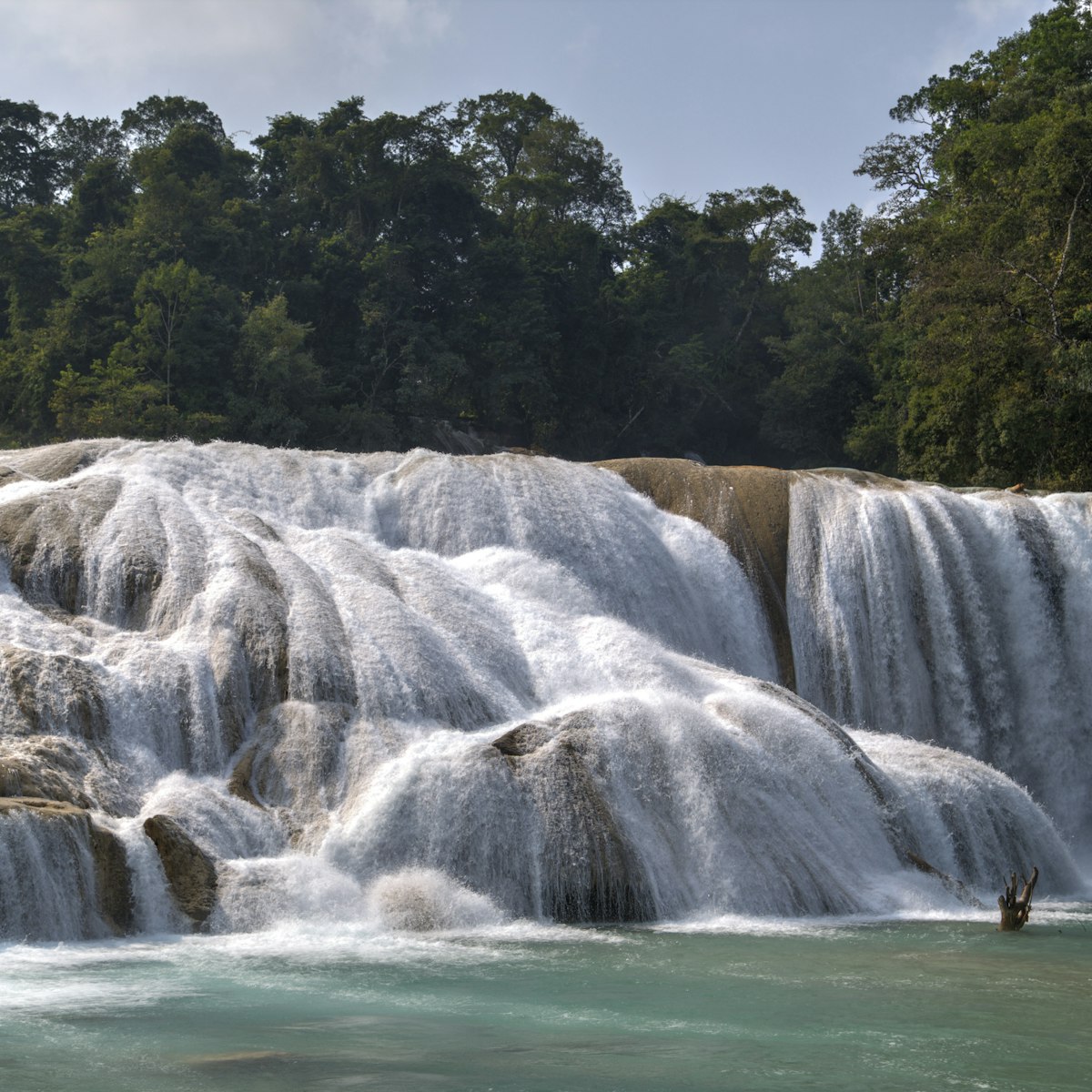The towering ceremonial core of Toniná, overlooking a pastoral valley 14km east of Ocosingo, is one of the most spectacular archaeological sites in Chiapas. This was the city that temporarily brought mighty Palenque to its knees. However, despite the ruins here being veritable poems in stone, and the sheer importance of the site, few people bother to visit – which is all the better for those who do.
The year AD 688 saw the inauguration of the Snake Skull–Jaguar Claw dynasty, with ambitious new rulers bent on controlling the region. Palenque was their rival state, and when Toniná captured the Palenque ruler K’an Joy Chitam II in 711, it’s likely that he had his head lopped off here.
Toniná became known as the Place of the Celestial Captives, because its chambers held the captured rulers of Palenque and other Maya cities, who were destined to be ransomed for large sums or decapitated. A recurring image in Toniná sculpture is of captives before decapitation, thrown to the ground with their hands tied.
To enter the site, follow the road from the entrance and site museum, which details Toniná’s history (in Spanish) and contains most of the best artifacts. The road turns into a footpath, crosses a stream and climbs to the broad, flat Gran Plaza. At the south end of the Gran Plaza is the Templo de la Guerra Cósmica (Temple of Cosmic War), with five altars in front of it. Off one side of the plaza is a ball court, inaugurated around AD 780 under the rule of the female regent Smoking Mirror. A decapitation altar stands cheerfully beside it. In 2011 archaeologists discovered two life-size stone sculptures of captive warriors inscribed as being from Copán (in Honduras), confirming that Maya kingdom’s wartime alliance with Palenque.
To the north rises the ceremonial core of Toniná, a hillside terraced into a number of platforms, rising 80m above the Gran Plaza. At the right-hand end of the steps, rising from the first to the second platform, is the entry to a ritual labyrinth of passages.
Higher up on the right-hand side is the Palacio de las Grecas y de la Guerra (Palace of the Grecas and War). The grecas are a band of geometrical decoration forming a zigzag x-shape, possibly representing Quetzalcóatl. To its right is a rambling series of chambers, passages and stairways, believed to have been Toniná’s administrative headquarters.
Higher again is Toniná’s most remarkable sculpture, the Mural de las Cuatro Eras (Mural of the Four Eras). Created between AD 790 and 840, this stucco relief of four panels – the first, from the left end, has been lost – represents the four suns, or four eras of human history. The people of Toniná believed themselves to be living in the fourth sun – that of winter, the direction north, mirrors and the end of human life. At the center of each panel is the upside-down head of a decapitated prisoner. Blood spurting from the prisoner’s neck forms a ring of feathers and, at the same time, a sun. In one panel, a dancing skeleton holds a decapitated head. To the left of the head is a lord of the underworld, resembling an enormous rodent.
Up the next set of steps is the seventh level, with remains of four temples. Behind the second temple from the left, more steps descend into the very narrow Tumba de Treinta Metros (Thirty-Meter Tomb), an impossibly slim passageway that’s definitely not for the claustrophobic!
Above here is the acropolis, the abode of Toniná’s rulers and site of its eight most important temples – four on each of the two levels. The right-hand temple on the lower level, the Templo del Monstruo de la Tierra (Temple of the Earth Monster), has Toniná’s best-preserved roof-comb, built around AD 713.
On the topmost level, the tallest temple, the Templo del Espejo Humeante (Temple of the Smoking Mirror), was built by Zots-Choj, who took the throne in AD 842. In that era of the fourth sun and the direction north, Zots-Choj had to raise this, Toniná’s northernmost temple, highest of all, which necessitated a large, artificial northeast extension of the hill.
Guides wait at the entrance; some speak English. They charge around M$300 to M$400 for up to four people.
Combis to Toniná (M$15) leave from a roofed depot next to Ocosingo’s Tianguis Campesino every 30 minutes. The last one returns around 5:30pm. A taxi costs between M$150 and M$180. There are currently no security issues surrounding a visit here.


